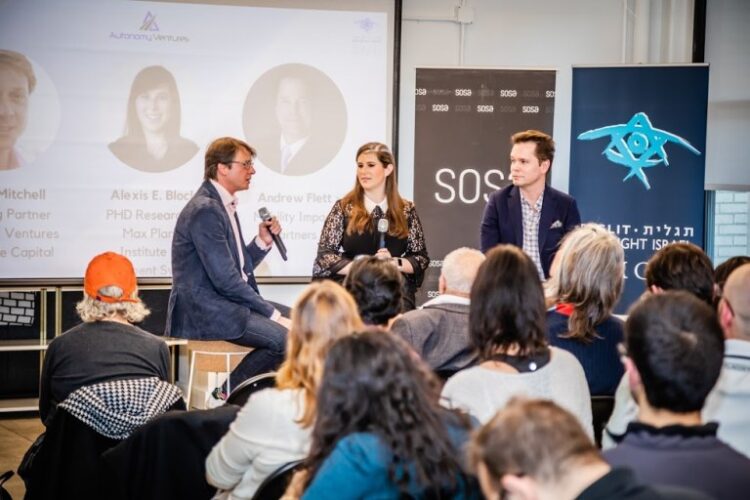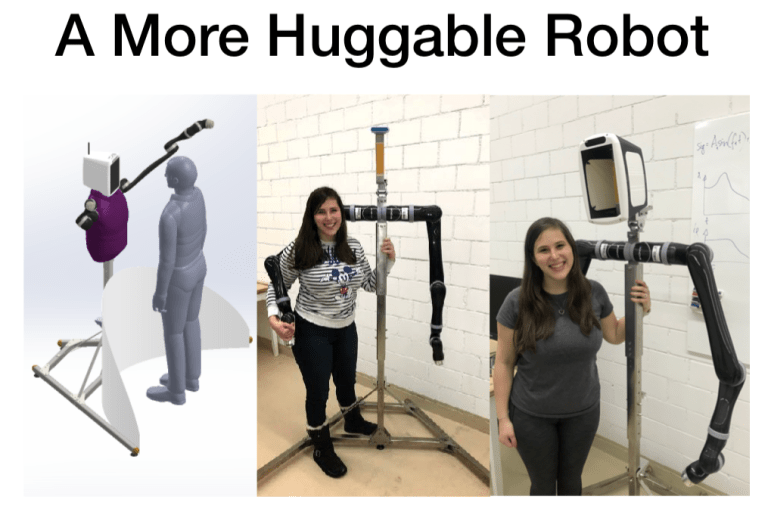Near the end of World War II, Adm. William “Bull” Halsey of the famed Third Fleet steered directly into a typhoon, losing 790 crewmen and 146 aircraft in the Pacific. Dr. Eric Daimler, formerly an innovation fellow with the Obama White House, shared this story with me in 2017 as an illustration of the importance of trusting data. It turned out that Halsey’s crime was listening to the weather report instead of his crew. Six months later, Adm Halsey again steered into a Typhoon, but this time losing only 6 men and 75 planes. It was not until the post-War era, and especially after NASA launched the first weather satellite in 1960, that severe weather predictions started the process of earning the trust of seafaring men and women.
Trust was the key takeaway from the recent RobotLab‘s discussion series on “Society 2.0: Understanding The Human-Robot Connection In Improving The World,” with Alexis Block of ETH Zurich and Andrew Flett of Mobility Impact Partners. In a world littered with social robot failures, Block is a refreshing voice. Her research provides a useful guide in breaking down the barriers between machines and humans, relieving many of dystopian anxiety.
When Ms. Block first shared with the media her work of studying the effects of robo–hugs, many pedestrian commentators were less than supportive, calling the innovation sad, dumb and a waste of time. Reading through the numerous negative postings it appears that the primary cry was the fear of a humanoid replacing the warmth of a living being. The doctoral student exclaimed to a packed audience that she is not discouraged and affably welcomes the criticism. Changing the mindset is actually the crux of her thesis.
To be clear, Block’s HuggieBot is not the latest erotic product from Abyss Creations, but a serious endeavor for people in need of human connections, such as children with autism and elderly dementia patients. As she explains, “We believe HuggieBot could one day be used to help separated friends or family (like college students or elderly people in nursing homes) feel closer to people who live far away. Also, it potentially could be used to help people on the autism spectrum who have a difficult time experiencing physical contact from other people but for whom deep pressure touch is extremely beneficial.” Hugs play a critical part to a person’s wellbeing, as each squeeze emits oxytocin, a hormone responsible for a person’s happiness. This “love hormone” is crucial for forming bonds between people, prompting the ETH scholar to question whether a mechanical act could elicit similar results. In her words, “It is important to analyze people’s reactions to hugging robots because it’s possible that people could react very differently to a robot than how they react to another person. In order to increase user acceptance of a robot, you need to understand how people feel about the robot and then design it, both physically and behaviorally, in the most socially acceptable manner for the majority of people. Otherwise, people just won’t use the robot because they don’t like it.” This hypothesis has applications far beyond social robotics, as the findings could be utilized by integrators for deploying collaborative robots and autonomous vehicles.
The experiment started with comparing the preconceived notions of robot hugs with post-experience interviews. Using a Willow Garage Personal Robot 2 outfitted in a variety of different exteriors and and squeeze timings, Block concluded, “Our research found that robots should hug very similarly to how people do: they should be soft, be warm, squeeze us slightly, and release immediately when we nonverbally indicate we’re ready.” She recorded levels of discomforts with long-duration hugs that wrapped cold metal arms around the human subjects. Today she is building version 2.0 with smaller Kinova Jaco arms that will be both slimmer and quieter. As the innovator describes, “HuggieBot 2.0 will ideally be able to begin the hug motion when it notices a person is approaching it by using a depth camera. It will also have the ability to identify different approaching user arm positions and be able to use the appropriate reciprocating arm positions.” A key aspect of the new study will be adding videos of loved ones to the screen of the robot to monitor reactions. “The new HuggieBot will have a screen that will be able to show either an animated face or a video message from a loved one,” boasts Block. The improved HuggieBot will launch promoting “Free Hugs” next final exam season at ETH Zurich and the University of Zurich, providing overworked students with badly needed stress-relief. The scientist sees her machine as a bridge to eventually having social robots as a member of the family in the home. “I think it is natural to develop an attachment to these robots similar to what you might have with your own friends and family so this could be another way to connect socially and physically to robots in the home,” professes Block.
I pressed the inventor about her thoughts on recent social robot hiccups, such as Jibo, Kuri and Anki. She responded, “I think given their high price point and limited abilities, these social robots just weren’t enough to convince users that it was a worthwhile investment. As with any new product, when you make smaller batches, the cost per item is more expensive. I don’t think these companies did anything wrong. If anything, I think it was a combination of the market not being ready to yet adopt the technology, especially because of the current climate of privacy concerns, combined with the limited capabilities at the high price point.” However, Block remains optimistic for the future of consumer mechatronics, “Because I see how excited people get in the mall when they see a Pepper just wheeling around. I think once privacy concerns are better addressed and we can provide a social robot at a reasonable price with a variety of capabilities – not just a tablet you can talk to but something that can physically and socially interact with its users in several different ways, then we’ll see a longer-lasting social robotics company.” She sees her contribution as more of helpmate than a novelty of an iPad on wheels. “Other humanoid robots have been created to help with more practical interactions with patients, like moving them from a bed to a wheelchair or an MRI. HuggieBot sits in between these two: it is a humanoid robot that physically interacts with a patient but appeals to the emotional side of the patient,” asserts the entrepreneur.
At the end of the evening, I spoke with a colleague from a venture capital firm that focuses on female founders. Reflecting on this discussion, I found myself thinking about the first time Charles Babbage met Ada Lovelace in the early nineteenth century. Similarly to how Lovelace created the foundation for computer programming with her original thinking, Block could be bringing the feminine touch to a cold industry that longs for mass adoption. Block’s sensitive approach not only could forge trust with robots, but perhaps even make humans value the companionship of one another more. “We view this technology as a supplement to human hugs, suitable for situations when requesting the comfort of a hug from another person is impossible, difficult, or uncomfortable.” Block contends and cautions, “We do not view this technology as an eventual replacement of human hugs or human connections. As with any technology, the public needs to be educated not only on how to use the technology but also how to appropriately use the technology. Just as too much television or social media are not good for human connections, relying too much on technology for a relationship is also not something we recommend.”





